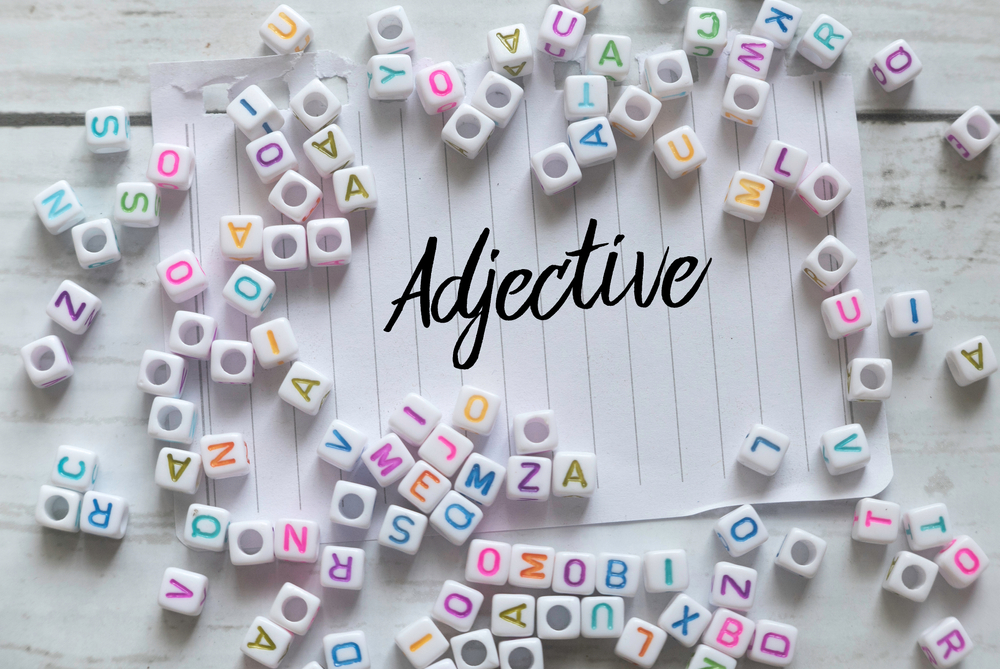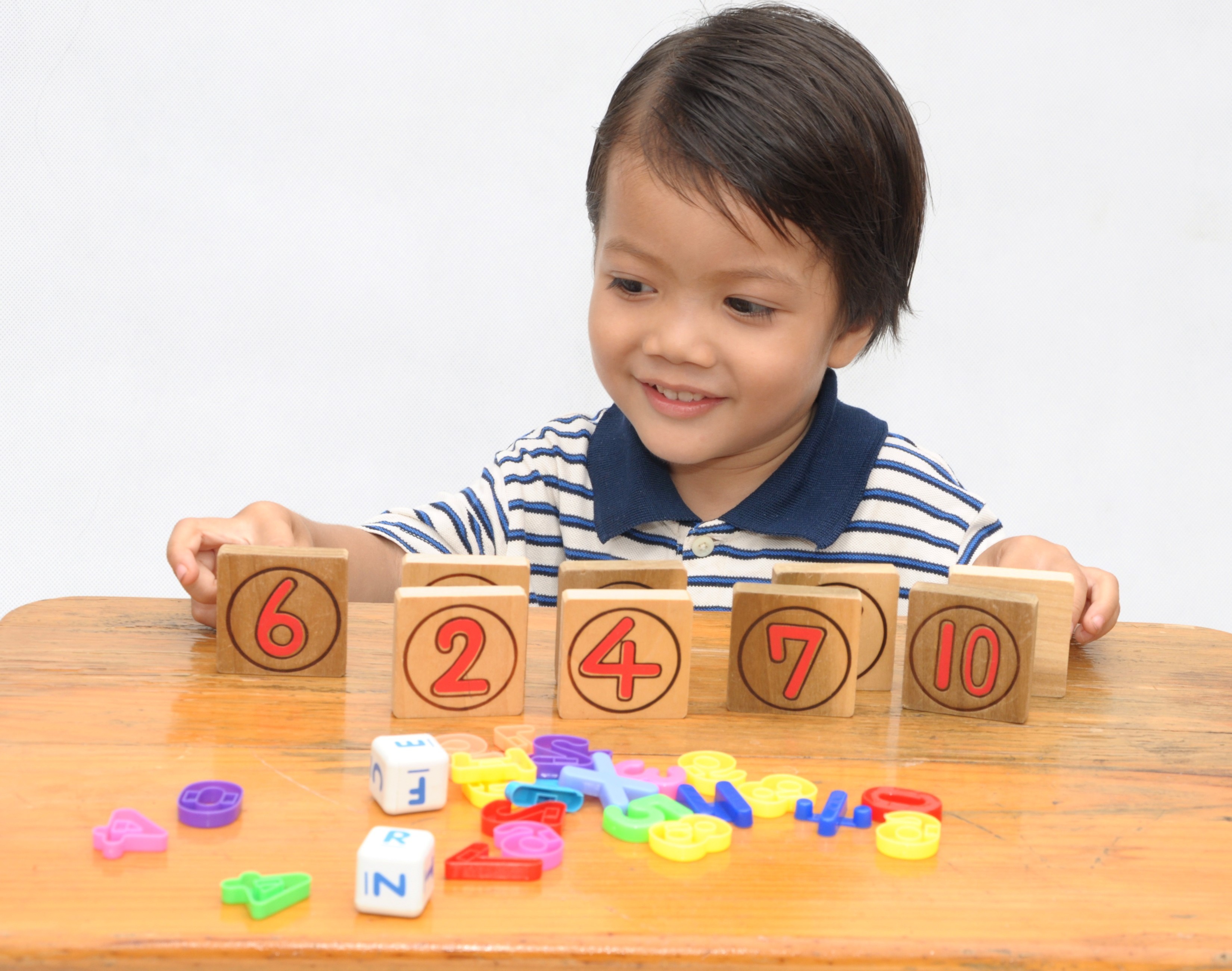Comparing sizes Worksheets for Ages 4-5
7 filtered results
-
From - To
Introducing our "Comparing Sizes Worksheets for Ages 4-5," designed to make learning fun and engaging. Perfect for preschoolers, these worksheets help children develop essential skills in size comparison through interactive activities. Each worksheet incorporates colorful illustrations and simple exercises that guide young learners to identify, compare, and categorize objects by size. These hands-on activities not only enhance their understanding of concepts like big and small but also improve critical thinking and observation. Ideal for early childhood education, our worksheets provide a strong foundation for math skills, ensuring your child is well-prepared for future academic success.


Tall or Short and Long or Short? Worksheet
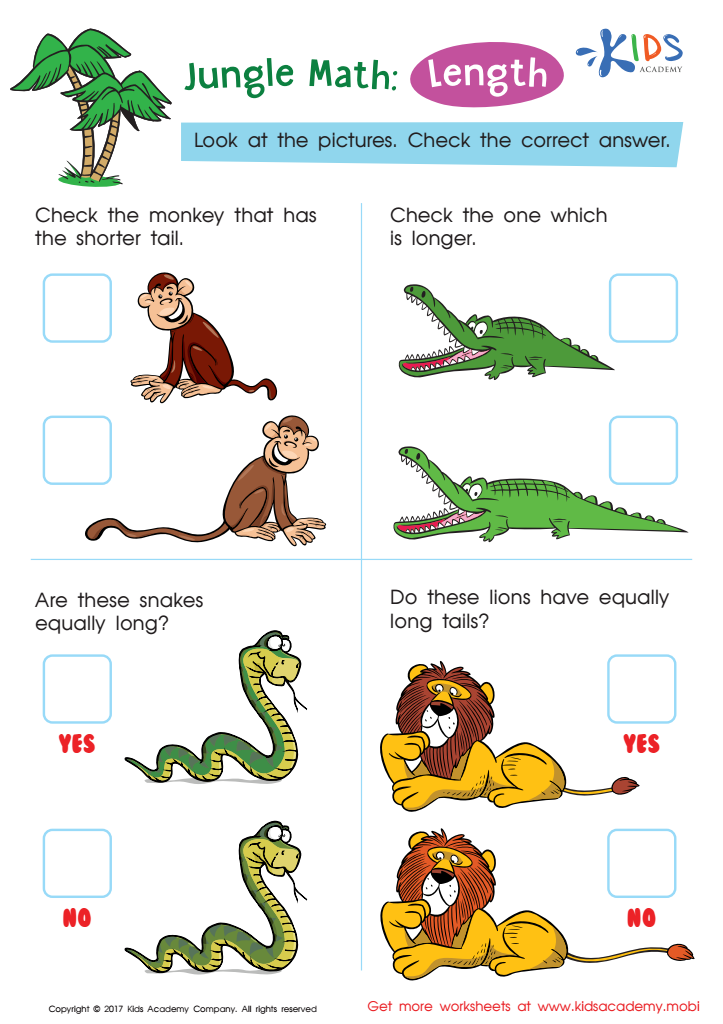

Which One Is Longer - Length Worksheet


Which Is Taller Worksheet


Measurement: Compare Volumes Worksheet
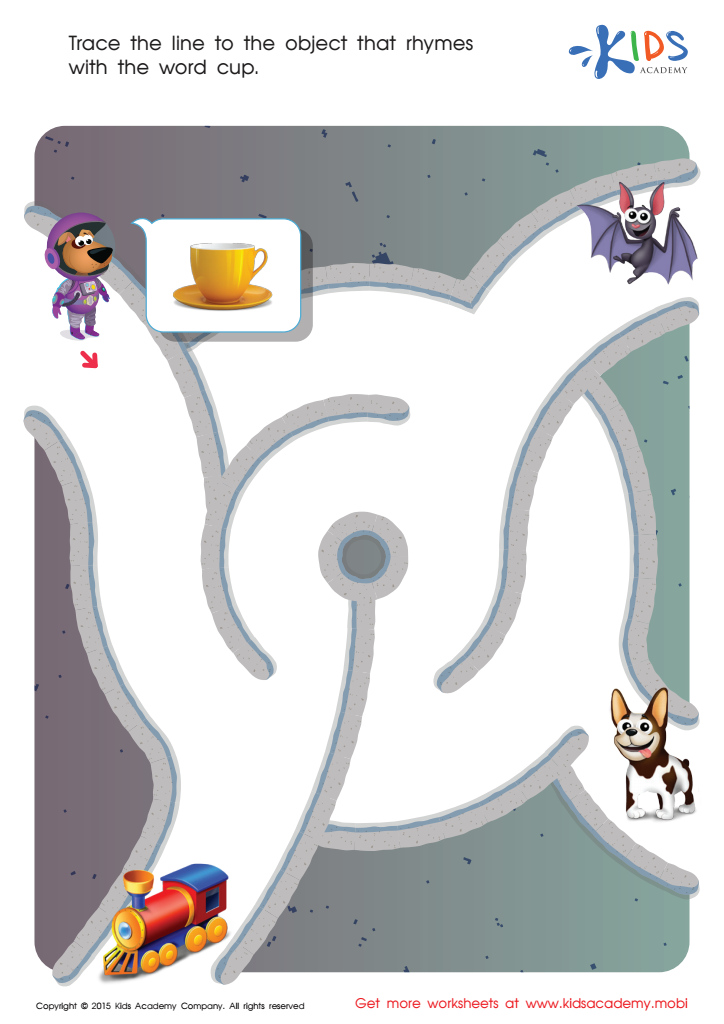

Cup Rhyming Words Worksheet
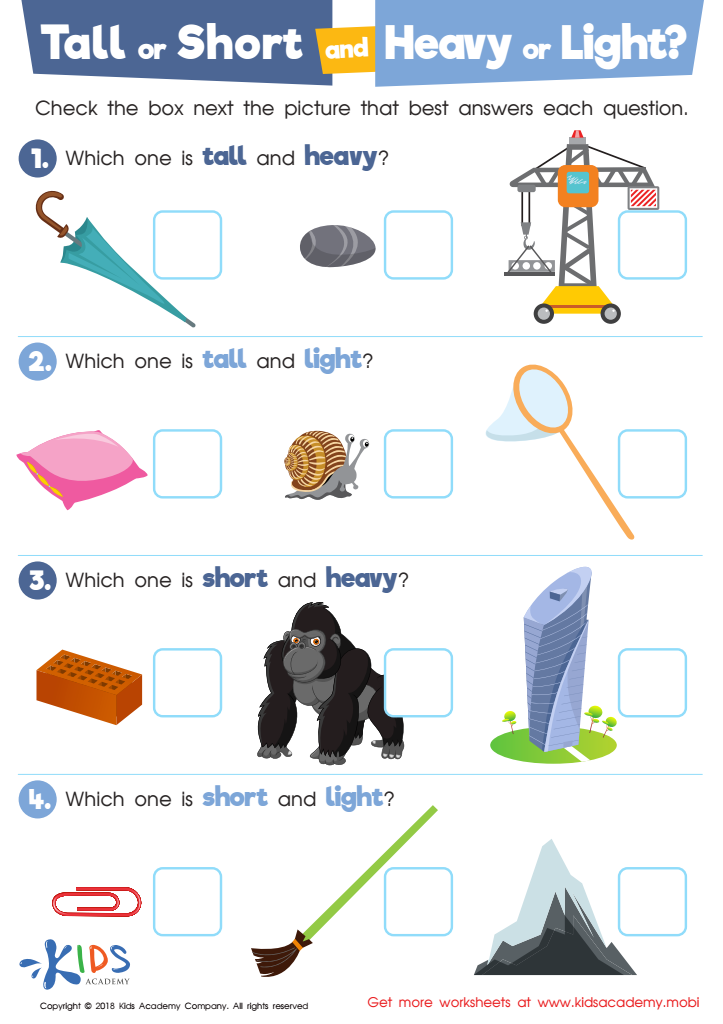

Tall or Short and Heavy or Light? Worksheet
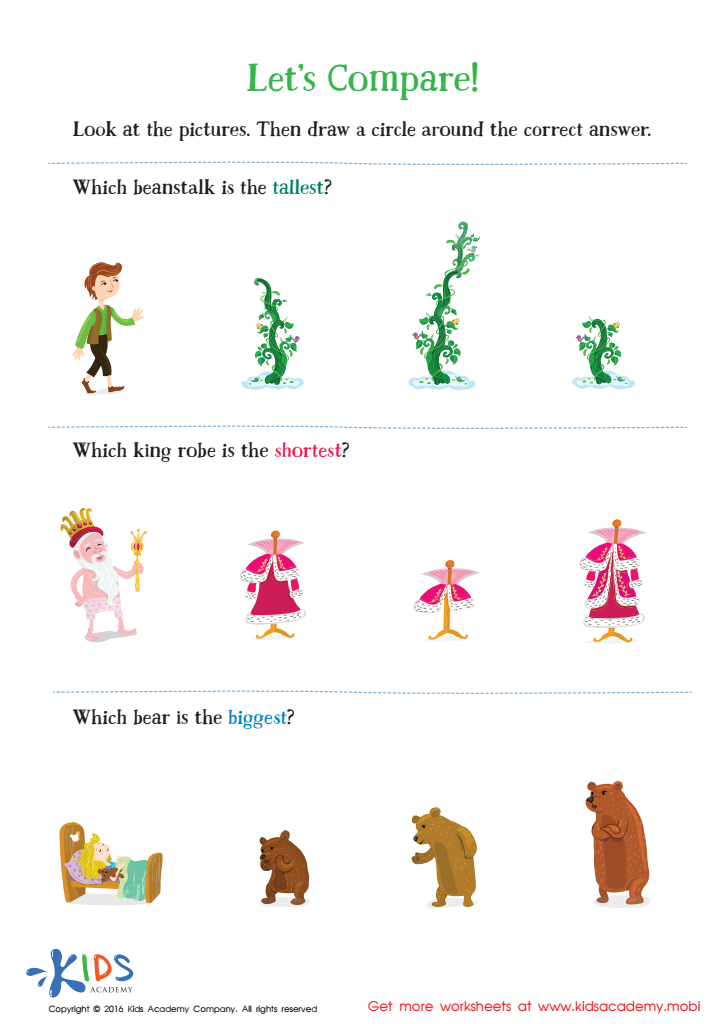

Fairy Tale Worksheet: Let's Compare
Understanding the concept of comparing sizes is a fundamental skill for young children, aged 4-5. Parents and teachers should care about this for several reasons. Firstly, comparing sizes nurtures early mathematical thinking. Activities like sorting objects by size or using language like "bigger," "smaller," and "equal" lay the foundation for more complex mathematical concepts they will encounter later, such as measurement and geometry.
Secondly, these activities help develop observational skills and attention to detail. When children compare objects, they learn to notice differences and similarities, which enhances their cognitive abilities and critical thinking. Additionally, comparing sizes supports language development. As children articulate their observations using comparative words, they expand their vocabulary and improve their communication skills.
Engaging in these comparisons can also boost social interactions. Group activities that involve comparing sizes encourage teamwork and discussion, helping children build important social skills and learn from each other's perspectives.
Finally, these activities are aligned with developmental milestones. At ages 4-5, children's visual and motor skills are still developing, and comparing sizes provides hands-on practice that enhances their fine motor coordination and spatial awareness. Parents and teachers caring about this aspect of early childhood development set children on a path of curiosity, analytical thinking, and effective communication.
 Assign to My Students
Assign to My Students





